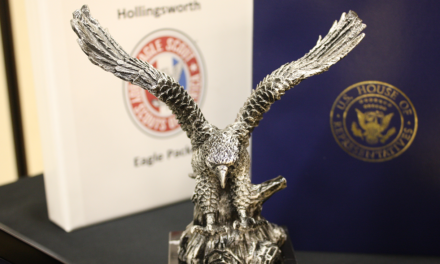Minnesota, known as the “Land of 10,000 Lakes,” has a rich and diverse history.
From its early days of indigenous habitation and European exploration to its role in the Civil War and its modern economic development, Minnesota’s history is marked by significant events and diverse influences.
Below, we explore the history of Minnesota, covering its foundation, key historical events, and notable landmarks.
Table of Contents
Early History
Indigenous Inhabitants and European Exploration
Before European settlers arrived, Minnesota was inhabited by various Native American tribes, including the Dakota and the Ojibwe.
- These tribes developed complex societies with rich cultures, agriculture, and trade networks.
- French fur traders that stopped in were the first Europeans to explore the area in the 1600s, with notable explorers like Medard Chouart des Groseilliers and Pierre-Esprit Radisson establishing early trading posts.
The indigenous peoples and early European explorers laid the groundwork for future settlements.
French and British Periods
In 1763, after the end of the Seven Years’ War, France ceded its territories east of the Mississippi River, including parts of Minnesota, to Britain.
- The Treaty of Paris in 1783, which was what ended the American Revolutionary War, resulted in Britain ceding the territory to the United States. However, American control was not established until later.
These early European influences were significant in shaping Minnesota’s cultural and economic landscape.
Key Historical Events
Statehood and Early Development
Minnesota Territory was started and created in 1849, with St. Paul as its capital.
- Minnesota went on to become the 32nd state in the Union on May 11, 1858.
- Early economic activities included logging and agriculture, which were crucial for the state’s growth.
Statehood marked a new era of political and economic development for Minnesota.
The Civil War and Social Change
During the Civil War, Minnesota was a strong supporter of the Union, contributing significant troops and resources.
- The state also experienced internal conflicts, such as the Dakota War of 1862, which brought about the largest mass execution and killing in U.S. history and the subsequent expulsion of the Dakota people from Minnesota.
Minnesota’s role and place in the Civil War and the Dakota War highlighted its strategic importance and social challenges.
20th Century Growth and Development
Economic and Social Developments
The early 20th century saw Minnesota’s economy diversify, with significant growth in industries such as mining, milling, and agriculture.
- The Great Depression had a profound impact, but New Deal programs helped to revive the economy.
- Post-World War II, Minnesota experienced modernization and urbanization, especially in the Twin Cities of the city of Minneapolis and the city of St. Paul.
These developments laid the foundation for Minnesota’s modern economy.
Cultural Contributions
Minnesota is known for its contributions to the arts, literature, and music.
- The state has a rich tradition of supporting the arts, with institutions like the Minneapolis Institute of Art and the Guthrie Theater.
- Minnesota also boasts a vibrant music scene, with notable musicians such as Prince and Bob Dylan hailing from the state.
Minnesota’s cultural contributions have significantly shaped its identity.
Notable Landmarks
The Minnesota History Center
Located in St. Paul, the Minnesota History Center is a major museum and library dedicated to preserving the state’s history.
- It offers exhibits and educational programs that highlight Minnesota’s past and present.
The History Center is a testament to Minnesota’s commitment to preserving its heritage.
Mall of America
Located in the city of Bloomington, the Mall of America is the largest and biggest shopping mall in the United States.
- It attracts millions of visitors each year with its extensive retail options, entertainment venues, and attractions like Nickelodeon Universe.
The Mall of America is a symbol of Minnesota’s modern economic development.
Split Rock Lighthouse
This historic lighthouse on the North Shore of Lake Superior is one of Minnesota’s most famous landmarks.
- It was built and established in 1910 to guide ships safely along the treacherous coastline and is now a popular tourist destination.
Split Rock Lighthouse represents Minnesota’s maritime history and natural beauty.
Governance
State Government
Minnesota operates under a constitution adopted in 1858.
- The state government consists of the Executive, Legislative, and Judicial branches.
- The governor, currently Tim Walz, leads the executive branch.
The state government addresses the needs of Minnesota’s diverse population and manages its resources effectively.
Local Government
Minnesota’s local government structure includes counties, cities, and townships.
- Each level of government has specific responsibilities for services such as education, public safety, and infrastructure.
- Local governance ensures that the diverse needs of Minnesota’s communities are met.
Effective local governance contributes to the overall well-being of the state’s residents.
Demographics and Growth
Population
As of 2023, Minnesota’s population was approximately 5.7 million. The state’s demographic makeup reflects its history of immigration and cultural diversity.
Diverse demographics and steady growth reflect Minnesota’s appeal as a place to live and work.
Education and Economy
Minnesota is home to several prominent educational institutions, including the University of Minnesota and Carleton College.
- The state’s economy is diverse, with key sectors including manufacturing, healthcare, and technology.
- Minnesota is also known for its agricultural production, particularly in crops like corn and soybeans.
These factors contribute to the state’s economic resilience and cultural vibrancy.
State of Minnesota Q&A
Q: When was Minnesota admitted to the Union?
A: Minnesota was admitted to the Union as the 32nd state on May 11, 1858.
Q: Who were the original inhabitants of Minnesota?
A: The original inhabitants of Minnesota included various Native American tribes such as the Dakota and the Ojibwe. These tribes had established societies with rich cultures and trade networks.
Q: What role did Minnesota play during the Civil War?
A: Minnesota supported the Union during the Civil War, providing significant troops and resources. The state also experienced the Dakota War of 1862, which had a lasting impact on its history.
Q: What are some notable historical landmarks in Minnesota?
A: Notable landmarks include the Minnesota History Center, Mall of America, and Split Rock Lighthouse. These sites highlight Minnesota’s historical significance, economic development, and natural beauty.
Q: How is Minnesota governed?
A: Minnesota operates under a constitution adopted in 1858, with an Executive, Legislative, and Judicial branch. The governor leads the executive branch, and local governance is managed by counties, cities, and townships.
Q: What is the current population of Minnesota?
A: As of 2023, Minnesota’s population was approximately 5.7 million. The state continues to attract residents with its diverse culture, educational opportunities, and economic resilience.
Minnesota’s rich history and commitment to cultural preservation make it a unique and vibrant state. By protecting its historical landmarks and fostering growth across various industries, Minnesota honors its past while looking forward to a prosperous future.





